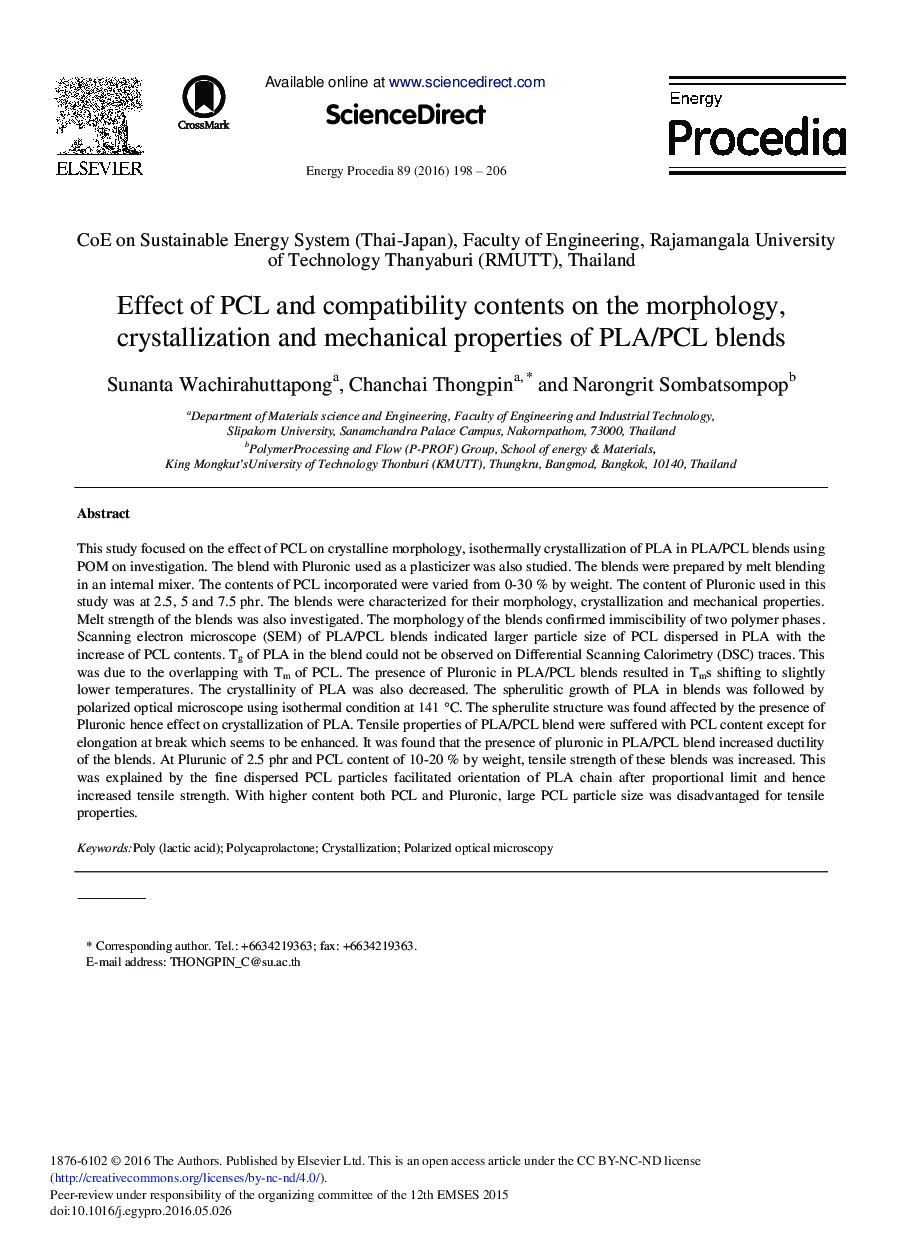| کد مقاله | کد نشریه | سال انتشار | مقاله انگلیسی | نسخه تمام متن |
|---|---|---|---|---|
| 1508742 | 1511146 | 2016 | 9 صفحه PDF | دانلود رایگان |

This study focused on the effect of PCL on crystalline morphology, isothermally crystallization of PLA in PLA/PCL blends using POM on investigation. The blend with Pluronic used as a plasticizer was also studied. The blends were prepared by melt blending in an internal mixer. The contents of PCL incorporated were varied from 0-30% by weight. The content of Pluronic used in this study was at 2.5, 5 and 7.5 phr. The blends were characterized for their morphology, crystallization and mechanical properties. Melt strength of the blends was also investigated. The morphology of the blends confirmed immiscibility of two polymer phases. Scanning electron microscope (SEM) of PLA/PCL blends indicated larger particle size of PCL dispersed in PLA with the increase of PCL contents. Tg of PLA in the blend could not be observed on Differential Scanning Calorimetry (DSC) traces. This was due to the overlapping with Tm of PCL. The presence of Pluronic in PLA/PCL blends resulted in Tms shifting to slightly lower temperatures. The crystallinity of PLA was also decreased. The spherulitic growth of PLA in blends was followed by polarized optical microscope using isothermal condition at 141 °C. The spherulite structure was found affected by the presence of Pluronic hence effect on crystallization of PLA. Tensile properties of PLA/PCL blend were suffered with PCL content except for elongation at break which seems to be enhanced. It was found that the presence of pluronic in PLA/PCL blend increased ductility of the blends. At Plurunic of 2.5 phr and PCL content of 10-20% by weight, tensile strength of these blends was increased. This was explained by the fine dispersed PCL particles facilitated orientation of PLA chain after proportional limit and hence increased tensile strength. With higher content both PCL and Pluronic, large PCL particle size was disadvantaged for tensile properties.
Journal: Energy Procedia - Volume 89, June 2016, Pages 198–206